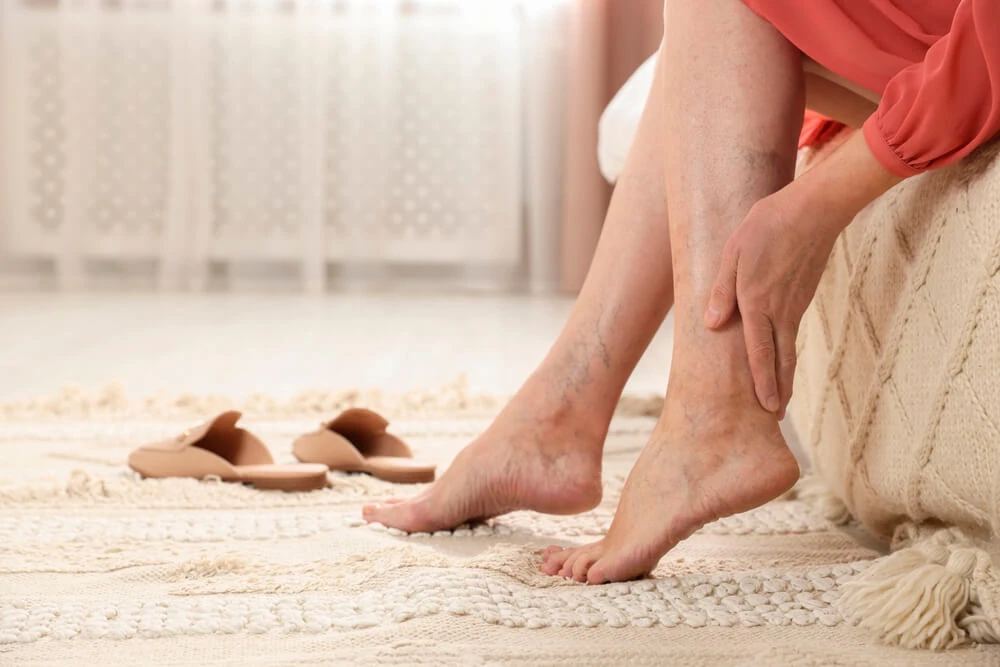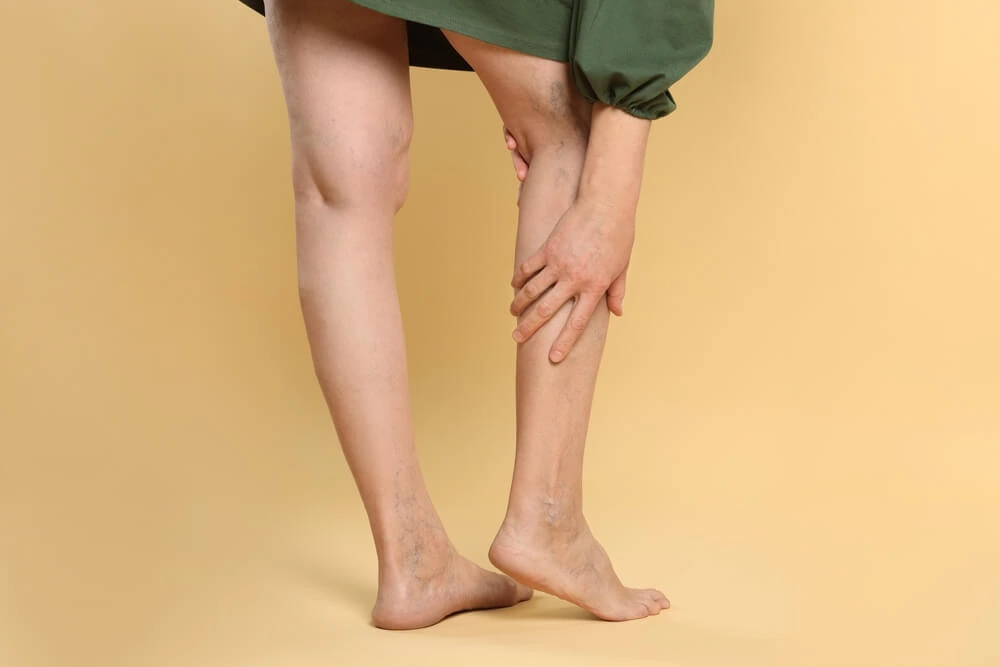Stepping into a sauna feels good—your muscles loosen, your body relaxes, and you sense your blood flow changing. But if you live with varicose veins, you may wonder if that comforting heat is actually making your veins worse. Should you avoid saunas altogether, or can they play a role in supporting your vein health?
The truth is more nuanced than a simple yes or no. Recent studies show that saunas can influence blood circulation and even impact the cardiovascular system. At the same time, enlarged or swollen veins respond differently to temperature shifts than healthy blood vessels. That’s why it’s important to separate fact from myth.
In this blog, you’ll learn what the science really says about sauna varicose veins, how saunas affect your veins and symptoms, and what treatment options are available to keep your legs healthier and more comfortable.
What Are Varicose Veins?
Varicose veins develop when the one-way valves inside your veins stop working properly. Normally, these valves keep blood moving upward from your legs back to your heart. When the valves weaken or the vein walls become less elastic, blood can pool, creating areas of increased pressure that stretch the veins. Over time, this leads to damaged veins that appear enlarged and twisted beneath the skin’s surface.
These changes disrupt the body’s circulatory system and interfere with the way your veins help pump blood back to the heart. Genetics, prolonged standing, and prolonged sitting can all play a role in the development of varicose veins, as can aging and lifestyle factors that put stress on the circulatory system.
Varicose Vein Symptoms
Knowing what to look for is essential when it comes to identifying varicose vein symptoms. While some people notice visible changes right away, others feel physical effects first. Here are the most common signs that patients may experience:
- Aching or Heavy Legs: A dull, tired feeling in the legs that worsens after long periods of standing.
- Throbbing or Burning Sensations: Uncomfortable symptoms caused by sluggish blood flow.
- Night Cramps: Painful muscle contractions that interrupt sleep and affect your well-being.
- Itching or Irritated Skin: Changes in the skin’s surface due to poor blood circulation.
- Swelling around the ankles: Veins that no longer return blood efficiently can cause fluid buildup.
- Restless Legs: An urge to move your legs, often linked to poor vein health.
- Visibly Twisted or Bulging Veins: Classic rope-like, swollen veins you can see under the skin.
What Research Says About the Sauna and Varicose Veins
Recent scientific studies show that saunas can influence your vein health in several meaningful ways, though direct research on varicose veins remains limited.
For example, research shows that passive heat therapy – including sauna use – mimics the effects of moderate aerobic exercise by improving blood flow, increasing blood circulation, reducing arterial stiffness, and lowering blood pressure. All these effects contribute to better cardiovascular health. These findings suggest that improved, increased blood flow and reduced vascular resistance may support healthier veins.
One study even found that routine sauna use was associated with a lower incidence of venous thromboembolism, indicating a possible protective effect against blood clots for varicose vein patients. Meanwhile, studies of balneotherapy – a water‑based heat treatment common in spas – have demonstrated modest improvements in pain, quality of life, and skin appearance for people with chronic venous insufficiency, though they do not conclusively reduce disease severity or swelling.
In summary, sauna use appears beneficial for general vascular health by promoting:
- Blood circulation
- Lower blood pressure
- Reduced clot risk
However, for varicose vein patients specifically, the benefits are possible – but not yet proven – and should be balanced with caution, hydration, and professional guidance.
Other Vein Treatment Options for Varicose Veins
While saunas may influence vein health, they are not a direct solution for treating varicose veins. Lasting relief comes from medical procedures that target the underlying problem: damaged veins that can no longer return blood effectively.
Today’s modern approaches are minimally invasive, performed in-office, and designed to restore better circulation with little downtime. Here are some of the most common and effective options available:
- EVLA (EndoVenous Laser Ablation): A thin fiber delivers targeted heat inside the vein, sealing it shut so blood flow is redirected to healthier veins.
- Cosmetic Sclerotherapy: A special solution is injected into the affected vein, causing the vein walls to collapse and eventually fade from view.
- Foam Sclerotherapy: A foamed version of the sclerosant solution provides more surface contact, making it highly effective for larger or twisted veins.
- Ambulatory Phlebectomy (Microphlebectomy): Tiny incisions are made to surgically remove bulging varicose veins directly, producing both cosmetic and functional improvement.
- Ultrasound-Guided Chemical Ablation (USG): With the guidance of ultrasound imaging, a concentrated solution is injected into deeper veins to close them off safely.
Each of these treatments addresses the source of varicose vein symptoms, improves blood circulation, and supports overall well-being. For varicose vein patients, the right option depends on the size, location, and severity of the condition as well as personal goals for comfort and appearance.
Take the Next Step for Healthier Veins with the Kimmel Institute
Saunas may offer benefits for overall cardiovascular health, including better circulation and a lower risk of blood clots, but the research on their direct effect on varicose veins is still limited. What we do know is that vein issues are best addressed through proven medical approaches that restore proper blood flow, reduce symptoms, and prevent long-term complications. That’s where expert care makes the biggest difference.
At the Kimmel Institute, you’re not just another patient – you’re treated with individualized attention from a board-certified cardiovascular surgeon, Dr. Kimmel, with over 30 years of experience. With advanced technology, precise diagnostic tools, and a compassionate team approach, you get care that goes far beyond temporary symptom relief, focusing instead on proven vein treatments. Whether you’re struggling with painful, swollen veins, cosmetic concerns like spider veins, or serious conditions linked to deep vein thrombosis, you deserve answers and effective solutions.
Experience is the difference. Schedule a consultation with the Kimmel Institute today, and take the first step toward healthier legs, improved comfort, and lasting well-being.


